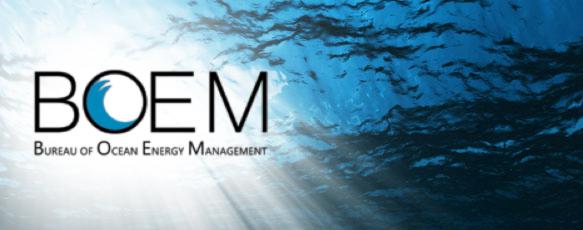
The National Ocean Policy sets forth a vision of an America whose stewardship ensures that the ocean, our coasts, and the Great Lakes are healthy and resilient, safe and productive, and understood and treasured so as to promote the well-being, prosperity, and security of present and future generations. In order to better meet our Nation’s stewardship responsibilities for the ocean, our coasts, and the Great Lakes, President Obama established the Interagency Ocean Policy Task Force (Task Force) and charged the Task Force with developing recommendations to enhance our ability to maintain healthy, resilient, and sustainable ocean, coasts, and Great Lakes resources. The Department of the Interior was part of the Task Force and BOEM will have a substantive role in meeting goals in the National Ocean Policy Implementation Plan, which was released on April 16, 2013 by the Obama Administration:
Designed to be a living document, the Implementation Plan translates the National Ocean Policy into on-the-ground actions to benefit the American people. With significant public input from a wide spectrum of individuals and interests, the final Implementation Plan focuses on improving coordination to increase administrative efficiencies in the Federal permitting process; better manage the ocean, coastal, and Great Lakes resources that drive so much of our economy; develop and disseminate sound scientific information that local communities, industries, and decision-makers can use; and collaborate more effectively with state, tribal, and local partners, marine industries, and other stakeholders. Without creating any new regulations or authorities, the plan will ensure the many Federal agencies involved in ocean management work together to reduce duplication and red tape and use taxpayer dollars more efficiently.
The plan is divided into five sections:
- The Ocean Economy
- Safety and Security
- Local Choices
- Science and Information
- A framework for effective Coastal and Marine Spatial Planning (CMSP) based on comprehensive and integrated ecosystem-based management approach
The Appendix to the Implementation Plan lays out important milestones that Federal agencies, including BOEM, will pursue to act on the plan
Background
On July 19, 2010, President Obama signed an Executive Order (E.O. 13547) establishing the National Ocean Policy and adopting the Final Recommendations of the Task Force. The final recommendations provide:
- A framework for the Nation’s first ever National Policy for the Stewardship of the Ocean, Coasts and Great Lakes
- A governance structure to provide sustained high-level and coordinated attention to ocean, coastal, and Great Lakes issues
- An implementation strategy that identifies nine priority objectives
- A framework for effective Marine Planning employing a comprehensive and integrated Ecosystem-Based Management approach
The nine priority objectives provide a bridge between the policy and specific actions required to achieve the intent of the National Ocean Policy.
- Ecosystem-Based Management: foundational principle for the comprehensive management of the ocean, our coasts, and the Great Lakes
- Coastal and Marine Spatial Planning (CMSP)
- Inform Decisions and Improve Understanding
- Coordinate and Support
- Resiliency and Adaptation to Climate Change and Ocean Acidification
- Regional Ecosystem Protection and Restoration
- Water Quality and Sustainable Practices on Land
- Changing Conditions in the Arctic
- Ocean, Coastal, and Great Lakes Observations, Mapping, and Infrastructure














